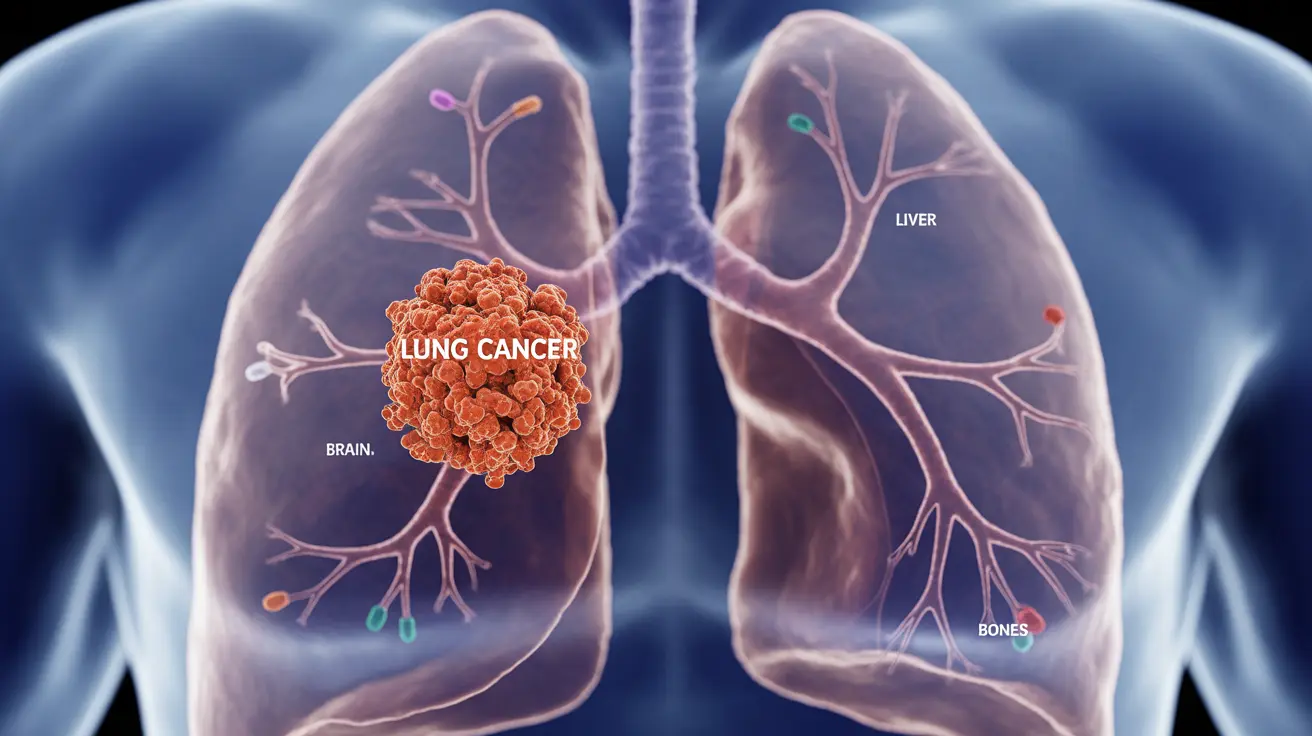Metastatic lung cancer represents an advanced stage of cancer where malignant cells have spread from the lungs to other parts of the body. This complex condition requires comprehensive medical attention and understanding, both for patients and their caregivers. Early recognition of symptoms and access to appropriate treatment options can significantly impact quality of life and disease management.
Understanding Metastatic Lung Cancer
When lung cancer becomes metastatic, it means cancer cells have traveled through the bloodstream or lymphatic system to create new tumors in other organs. Common sites of lung cancer metastasis include the brain, bones, liver, and adrenal glands. The behavior and impact of these metastases can vary significantly depending on their location and extent.
Recognizing the Signs and Symptoms
The symptoms of metastatic lung cancer can vary widely based on where the cancer has spread. Understanding these location-specific symptoms is crucial for early detection and proper medical intervention.
Common General Symptoms
- Persistent cough
- Shortness of breath
- Unexplained weight loss
- Fatigue
- Chest pain
Location-Specific Symptoms
- Brain metastases: Headaches, seizures, vision changes
- Bone metastases: Bone pain, fractures
- Liver metastases: Abdominal pain, jaundice
- Adrenal metastases: Lower back pain, fatigue
Diagnostic Procedures and Testing
Diagnosing metastatic lung cancer requires a comprehensive approach using various imaging and testing methods to determine the extent of spread and guide treatment decisions.
Common Diagnostic Tools
- CT scans
- PET scans
- MRI
- Bone scans
- Tissue biopsies
- Blood tests
Treatment Approaches
Modern treatment for metastatic lung cancer often involves a combination of different therapies, tailored to each patient's specific situation and the characteristics of their cancer.
Primary Treatment Options
- Targeted therapy
- Immunotherapy
- Chemotherapy
- Radiation therapy
- Surgery (in select cases)
Targeted Therapy and Immunotherapy
These newer treatment approaches have revolutionized metastatic lung cancer care. Targeted therapy focuses on specific genetic mutations driving cancer growth, while immunotherapy helps the body's immune system recognize and fight cancer cells more effectively.
Managing Quality of Life
Palliative care plays a crucial role in managing symptoms and improving quality of life for patients with metastatic lung cancer. This comprehensive approach addresses both physical and emotional needs throughout the treatment journey.
Frequently Asked Questions
What are the common symptoms of metastatic lung cancer and how do they vary depending on where the cancer has spread? Common symptoms include persistent cough, shortness of breath, and fatigue. Symptoms vary by location: brain metastases cause headaches and neurological symptoms, bone metastases cause pain and fractures, and liver metastases may cause jaundice and abdominal pain.
How is metastatic lung cancer diagnosed and what tests are used to detect the spread to other organs? Diagnosis involves multiple imaging tests including CT scans, PET scans, and MRIs, along with tissue biopsies and blood tests. These help determine the extent and location of cancer spread.
What treatment options are available for metastatic lung cancer and how do targeted therapy and immunotherapy work? Treatment options include targeted therapy, immunotherapy, chemotherapy, and radiation therapy. Targeted therapy attacks specific cancer-causing genetic mutations, while immunotherapy enhances the immune system's ability to fight cancer cells.
Can metastatic lung cancer be cured, and what is the typical prognosis for patients with this advanced stage? While metastatic lung cancer is generally not curable, many patients can achieve disease control and extended survival with modern treatments. Prognosis varies significantly based on individual factors, cancer type, and response to treatment.
How can palliative care help manage symptoms and improve quality of life in metastatic lung cancer patients? Palliative care provides comprehensive symptom management, pain control, and emotional support. It works alongside primary cancer treatment to improve overall quality of life and help patients maintain daily activities.




